It’s our fervent hope that each of you, our readers, will greatly enjoy and appreciate this article we present about these 4 Fabulous North American Caves. It was certainly our pleasure to gather the various information for you. May it provide you with both education and increased awareness.
Certainly, although spectacular, these formations listed herein represent only a very small portion of the marvels found throughout this amazing region. It’s our belief, though, that they serve as excellent representations of the features found here. Check out some of our other articles, as well.
Luray Caverns
Luray Caverns Facts
- Leading off this article about these 4 Fabulous North American Caves we present the stunning site typically known as Luray Caverns.
- This spectacular, though lesser-known, marvel of geology most frequently goes by the deceptively simple name we’re using here. It did previously possess a slightly different name in the past, though. This magnificent site originially bore the name of Luray Cave.
- Not surprisingly, numerous local Native American populations long knew of the existence of this fabulous formation. There’s no evidence of regular use or visitation by any of them, though. Exactly how long ago they discovered it also continues to remain entirely unknown.
- In modern times, however, the first known sighting of the mesmerizing caverns by non-native settlers occurred on August 13, 1878. At that time, five locals stumbled upon the amazing natural wonder. Their attention had been drawn by an air current from a small sinkhole.
- Legal disputes over unchallenged ownership of the property on which the complete system lies quickly came into play, however. That occured because the men who discovered the site did not disclose it to the then owners, because the land was due to be sold at auction.
- Following this realization, legal battles subsequently began. The courts eventually nullified the first purchase of the land. Later, the overall tract of land changed hands several times in the next few years. Eventually, the Luracy Caverns Company purchased the site in 1893.
- Its indescribably stunning visual scenery understandly quickly drew massive attention to what later became known as Luray Caverns. The government officially listed the location as a National Natural Landmark in the year 1974. As of 2018, about 500,000 people visit it per year.
Luray Caverns Physical Description
The gorgeous Luray Caverns represents a series of interconnected caverns. Each impresses the fortunate visitor with its abundance of wonders. Though it’s certainly not the most extensive such system known, it still packs a real punch. Its physical description nevertheless bears mentioning.
The entrance from the surface begins as a path that angles somewhat sharply downward. This quickly opens into the interconnected series of chambers of various dimensions. The smallest of these has a ceiling of about 30 ft (9 m). The highest, though, reaches an impressive 143 ft (90 m).
It’s not just about the pure size of the fascinating location, though. It’s also about the sheer splendor to be observed there. This site boasts an extraordinary array of varied natural formations. For starters, it possesses a wide array of features such as stalactites, stalagmites, and mud flows.
This splendor’s also augmented by the presence of two bodies of water. These features bear the literary names of Dream Lake and the Silver Sea. The former remains the largest body of water present. Despite a naturally created illusion, however, it only measures around 20 in (50 cm) deep.
The most astonishing feature of the Luray Caverns, however, remains one distinctively named the Luray Singing Tower. That’s a remarkable assemblage of stalactites formed in very close proximity. A total of 47 of them, in fact. This collection measures an incredible 117 ft (36 m) in height.
Colors of the various formations understandably vary, of course. Surprisingly for many, though, white predominates. Incredibly, this memorable site packs all these wonders into a comparatively short length. That’s because the entirety of the structure only extends for 1.5 mi (2.4 km).
Luray Caverns Location, Formation, and Illusions
The Luray Caverns formed in a region of the world already well known for its incredible abundance of natural geological beauty. That’s due to the fact that this natural wonder formed in what now constitutes the continent of North America. Even here, it stands out from similar features.
Within this larger area, it lies within the national confines of the United States. There, it further sits on the eastern side of the continent. Natural processes additionally created the wonder in the region now called the state of Virginia. It’s also situated close to the far northern border of that state.
The precise date of the formation for this marvelous site also presently remains undetermined by any research. The closest geologists can come is that its origins lie sometime during the Tertiary Period. That, though, places its beginnings anywhere between 66 and 2.6 million years ago.
Likewise, the exact process that began its formation also remains definitively undetermined. The most likely cause, however, continues to be simple erosion of the surrounding rock strata by the actions of water. That’s composed primarily of a relatively soft stone known as dolomite.
Captivating Luray Caverns also boast two separate illusions within its walls. At Dream Lake, its water remains so still that stalactites hung from the ceiling are reflected in the water. This creates the illusion that they’re actually stalagmites. But the water’s only about 20 in (50 cm) deep.
Astoundingly, a small greenish pond within the caverns creates the opposite illusion. Named the Wishing Well, this feature gives the appearance of being roughly 3 – 4 ft (0.91 – 1.22 m) in depth. Despite this, the small body of water actually measures 6 – 7 ft (1.8 – 2.1 m) in average depth.
Giant Crystal Cave
Giant Crystal Cave Facts
- Next up among this compilation of 4 Fabulous North American Caves comes the aptly-named masterpiece of Nature named the Giant Crystal Cave.
- Perhaps most notably of all, the term applied herein refers to one of the most truly fabulous marvels of Nature founf anywhere on earth. In fact, in many ways, this otherworldy location currently remains one of the most unique of its kind ever discovered on the planet.
- Still more of interest remains to the amazing story, however. That’s because, astoundingly, humans discovered this breathtaking place completely by accident. That truly fortuitous event occurred in the year 2000, in the eventual course of local ongoing mining activities.
- However, the very nature and precise location of the stunning site forever makes this breathtaking creation of geological forces unavailable to the general public at large. That’s because of one amazing fact, its extremely close proximity to a nearby magma chamber.
- In the Giant Crystal Cave, Nature provided this unique site with a measure of built-in security from the intrusion of man. The very forces that created it continue to protect and preserve it, after a fashion. These make it impossible to visit it without specialized protective gear.
- In fact, the temperature and humidity constantly remain so high that the heat index equals 228 F (105 C). It’s a moot point now, however. After a measure of exploration, researchers stopped the pumps keeping water out. It then rapidly refilled with water, thus preventing access.
Giant Crystal Cave Physical Description
The incredible Giant Crystal Cave literally appeared to its few visitors like an alien landscape. That’s partly due to the fact that it serves as home to the largest crystals found on earth. Incredibly, some of these behemoths attain a size as great as 34 ft (11 m) long and an estimated weight of 55 tons.
These astoundingly large crystals have a composition primarily consisting of selenite. This mineral, the nearby magma chamber deposited over the course of countless centuries. These enormous and impressive crystals formed as a result of an extremely special combination of many factors.
This formative process began with greatly heated groundwater being saturated with sulfide ions. Subsequent to this action, significantly colder surface water leaked down and contacted the mineral-saturated hot water. This formed the next step in the slow process of formation.
However, an extremely surprising thing subsequently occured in the Giant Crystal Cave. That’s because the two supplies of water did not actually mix together. This amazing lack of mixing occurred due to the difference in the relative densities of the two entirely separate water supplies.
Due to the combination of these highly unique natural factors, hydrated sulfates, principally gypsum, inexorably formed at an extremely slow rate over the course of at least 500,000 years. As these painstakingly crystallized, they formed the enormous crystals present in the cave today.
Giant Crystal Cave Location, Condition, and Exploration
The absolutely astounding Giant Crystal Cave formed in a region of the world already renowned for its extraordinary abundance of natural marvels. That location therefore likely won’t surprise many people. This stunning site formed in the general area of Chihuahua, Mexico, in North America.
Being a cave, it quite obviously lies below the surface of the earth. Yet another fact about the placement of this wonder of Nature is its depth. That’s due to the fact that it sits only 1,000 ft (300 m) beneath the surface. Despite that, the masterpiece remained unknown until modern times.
Despite its comparative proximity to the surface, however, due to the extreme conditions within the remarkable cave, researchers still know extremely little about it. What modern science does currently know about this product of amazing natural processes can be summed up briefly.
As remains the norm, the amazing cavern formed slowly, and in what approximates a roughly horseshoe shape. It also lies situated within an enormous limestone deposit. Large, faceted blocks od crystal also cover the floor, and the enormous crystalline beams protrude through these.
This situation creates incredible patterns, merely serving to enhance its beauty. When man originally discovered Giant Crystal Cave, though, water filled the inside. It later became accessible only because the nearby mining operation which discovered it continued pumping the water away.
Only authorized researchers had access permits, due to the utterly inhospitable conditions. Experts made the decision to allow the site to flood again, though, since exposure to air was beginning to erode the crystals. For now, no plans exist to explore the site further, to preserve its natural state.
Caverns of Sonora
Caverns of Sonora Facts
- Our next choice for inclusion in this gathering of 4 Fabulous North American Caves is the stunning work of natural art named the Caverns of Sonora.
- The term that’s generally used for it remains a somewhat misleading name for this amazing feature, though that in no way diminishes its awesome nature. In point of fact, the breathtaking site actually constitutes an individual, though in many ways highly impressive, cave.
- In modern times, the magnificent feature first came to the attention of man in the early 1900’s, following its discovery by some local ranch workers. It currently remains unknown if local Native American tribes ever knew of its existence, though this seems quite unlikely.
- The mesmerizing location understandably lists as a world-class cave, due to the abundance and splendor of its many features. As a result, it now holds the status of a National Natural Landmark. With this in mind, the Federal and local governments encourage preservation.
- The mind-boggling Caverns of Sonora nevertheless now constitute a major tourist attraction in its immediate region. As such, it first opened for public tours in 1960. The presence of tour guides and the installation of walkways and railing strives to maintain its condition.
- Sadly, however, prior to these actions, the natural wonder suffered substantial damages from the actions of either inattentive or uncaring explorers. The most tragic such loss was the destruction of part of an ancient natural mineral formation that strongly resembled a butterfly.
Caverns of Sonora Physical Description
To date, the full dimensions of the fantastic Caverns of Sonora still remain unknown to science, since it’s still being explored. When first discovered, only 2 mi (3.2 km) of the outer portions were known to man. Currently, a total of 7 mi (11.2 km) has been explored and documented.
Scientists eventually expanded the original entrance to the caves, though. That’s because it only represented a tiny opening measuring about 20 in (51 cm). Once inside, however, a marvel of Nature awaits. It’s filled with many narrow passages lined with countless natural features to amaze one.
The hauntingly lovely caverns intriguingly boast an astoundiing abundance of formations, known as stalagmites and stalactites. Both of these structures form from long-term calcium carbonate deposits. Stalactites hang from the ceiling, while the many stalagmites there rise from the ground.
In fact, one particular section of this mind-numbing fairyland remains filled with so many of these, it makes human passage nearly impossible. Locals long ago named this fabulous section of the show cave the snake pit. Most of these also still remain quite actively forming and expanding.
Even more incredible marvels await the intrepid explorer, though. These include amazing features known to experts as helictites. A distinctive feature of this remarkable spot beneath the earth’s surface, these comprise twisted, highly irregularly shaped speleothems that seem to defy gravity.
In other regions, objects called soda straws also appear. These delicate, hollow tubes hang from the ceiling and can grow several feet long. Flowstones, created by flowing water that leaves behind many layers of minerals, also appear as smooth, rippling sheets along the walls and floors.
In yet another part of this wonder of Nature that man continues to explore and discover, still a further amazing feature lies in wait to be seen. Here, comparatively thin, wavy sheets of calcite that supposedly resemble drapes or bacon strips, formed where water trickles down sloped surfaces.
One of the most famous sections of the Caverns of Sonora is named Crystal Palace. It’s with an array of crystal formations that glisten under the lights. A unique feature found in some areas is called moon milk. It’s a white, creamy deposit of calcite possessing a soft, pasty texture.
Still one more miracle of geological forces remains to impress the fortunate visitor, however. That’s the truly massive stalagmites that dominate certain chambers, showcasing the utterly impressive scale of the formations. These many objects collectively bear the name of the White Giants.
Caverns of Sonora Location and Formation
The magnificent Caverns of Sonora formed in a general region of the globe already well known for its extraordinary abundance of natural wonders. That area thus won’t surprise many people. That’s because Nature created this marvel as part of what’s now the continent of North America.
There, its precisegeographical location places it within the national borders of the United States. Within that country, it resides inside the state of Texas, which also borders the country of Mexico. Its placement also puts the caverns in the approximate southwestern section of the state.
The overall geological structure within which the incomprehensibly beautiful site resides formed around 100 million years ago. The cave itself, though, actually formed much later. More precisely, scientific evidence indicates that it formed somewhere between 1.5 and 5 million years ago.
Over millions of years, copious amount of rainwater, which absorbs carbon dioxide from the atmosphere and soil to form a weak carbonic acid, infiltrated the ground. This then seeped through cracks and fissures in the limestone. This began weakening it, setting the stage for more actions.
The slightly acidic water slowly dissolved the calcium carbonate in the limestone. This also had the natural effect of slowly enlarging the cracks and fissures to form underground voids and passages. That inexorable action ocurred via a process called chemical weathering or solutional erosion.
These numerous voids and passages gradually expanded over time into ever larger chambers and tunnels, creating the basic structure of the caverns. At this point, though, the gorgeous Caverns of Sonora still did not yet hold the appearance they do today, but it was nonetheless in process.
As the aforementioned acidic water continued to percolate through the limestone and into the caverns, it also carried with it prodigious quantities of dissolved calcium carbonate. When this mineral-rich water reached air-filled voids within the cave, it began to deposit that specific mineral.
The stalactites also formed as water minutely dripped from the ceiling, leaving behind trace amounts of calcite that accumulated over time. Stalagmites, however, conversely formed on the ground below from the dripping water that fell from the stalactites situated above their position.
The helictites themselves originated in an intriguing manner, too. Several natural processes created these irregular, highly twisted formations when water became pushed through tiny capillary tubes located in the rock. That action steadily deposited calcite in seemingly gravity-defying shapes.
The captivating flowstones also formed from sheets of water flowing over walls or floors, leaving behind smooth layers of calcite. Draperies and soda straws developed from water seeping through sloped surfaces or dripping slowly, creating thin, wavy sheets or hollow tubes of calcite.
Mammoth Cave
Mammoth Cave Facts
- Our final entry into this compendium of these 4 Fabulous North American Caves bears the fully warranted title of Mammoth Cave.
- This utterly mind-blowing creation of time and natural forces remains best known by the moniker we’ve chosen to employ here at this time. The wonder’s had numerous other designations before, though. These include Salts Cave, Flint Ridge Cave, and Cave City Cave.
- Not surprisingly, local Indigenous Peoples populations long knew, and made use of, its existence before outsiders discovered it. Archaeological evidence actually indicates that the native inhabitants of its region began exploring its amazing depths more than 5,000 years ago.
- In modern times, however, records of its rediscovery by European explorers remain imprecise. The credit for this typically goes to the late 1790s, when either John Houchin or Francis Houchin stumbled upon the cave. This fortuitous event actually occurred while hunting.
- Appreciation for its breathtaking wonders began almost immediately. This also quite naturally led to multiple efforts to explore its wonders, leading to astonishing discoveries. Due to its extreme appeal, by the early 19th century, this marvel became a popular tourist destination.
- The government of the country in which it sits fully recognizes the magnificence of the Mammoth Cave. It therefore received the designation as a National Park in 1941. It also later became a UNESCO World Heritage Site in the year 1981, for its natural significance.
- Scientists continue to study the cave’s geology, hydrology, and biology to understand its formation and ecosystem. Given its acknowledged distinctiveness, and sheltering of indigenous species, it’a also been designated an International Biosphere Reserve.
Mammoth Cave Physical Description
The masterpiece of natural construction man named Mammoth Cave fully merits that designation. That’s becasue it ranks as the largest of all known cave systems of earth! To date, total mapped passageways exceed an astounding 400 mi (640 km) in length, with possibly more waiting.
Despite its extraordinary measurement in this particular dimension, however, it’s not known for its depth. That due to the surprising fact that this marvel of geology actually remains relatively shallow in this regard. Even at its lowest point, it’s never more than 379 ft (15 m) beneath the surface.
Yet, within its vast confines, one finds a true abundance of natural marvels. These include both stalactites and stalagmites. The former hangs from the ceiling, while the latter rises from the floor, typically located beneath them. Both form by the slow deposition of minerals from dripping water.
Due to the great age of the cave, some of these structures have been forming for so long that they have met and subsequently merged into a single structure spanning floor-to-ceiling. When stalactites and stalagmites meet, geolgists usually simply refer to the final result as columns.
Some of the other wonders found within Mammoth Cave also include flowstones. These features formed by sheets of water flowing over the cave walls, leaving behind a smooth, layered appearance. Helictites also appear, developing as large formations that grow in curving, twisting shapes.
Certain key areas and features even bear highly distinctive names denoting their appearance. Grand Avenue constitutes a broad, impressive passageway known for its great size and beauty. Frozen Niagara’s a spectacular section featuring flowstones that resemble a frozen waterfall.
Not content to end there, though, another feature named the Rotunda forms one of the largest rooms anywhere within the amazing cave, characterized by its massive dome-shaped ceiling. Bottomless Pit also exists as a deep chasm that adds an element of mystery and intrigue.
Yet another remarkable area exists inside of this marvel. It’s not for the claustrophobic, however. While most of the site’s quite open, the perhaps cruelly-named Fat Man’s Misery forms a impressively narrow, winding passage that challenges visitors to squeeze through tight spaces.
Mammoth Cave Location, Formation, and Ecosystem
The mind-boggling Mammoth Cave formed in a general region of the world already well known for its uncommon abundance of other geological wonders. That location’s therefore not likely to surprise many people. Nature placed the cave on what’s now known as North America.
There, its general placement situates it within the national borders of the United States. The marvel further lies inside the confines of the state of Kentucky, which puts it in the eastern portion of the country. Within the beautiful state itself, the system resides roughly in the central portion.
The earliest origins of this utterly mesmerizing site go back over 330 million years. At that far distant time, the local region lay at the bottom of a shallow sea. Over past periods of time, though, sediments accumulated on the sea floor, eventually forming thick layers of limestone and dolomite.
Powerful geological forces, however, gradually uplifted the region, exposing the limestone to surface processes. Gradually, surface erosion removed the overlying materials, exposing the limestone to atmospheric and hydrological influences. Chemical weathering also assisted in this action.
But, the initial development of the cave involved the formation of primary conduits, or main drainage channels. This process later allowed groundwater to flow and dissolve more limestone. These expanded through continuous dissolution, creating larger tunnels and chambers.
As the indescribably spectacular cave system painstakingly grew, numerous intersecting passages eventually formed, creating a highly complex, interconnected network. Sections of the cave occasionally collapsed, leading to the reworking of sediments and further enlargement of passages.
The astounding features of Mammoth Cave don’t end with its geology, though. These extend to a surprising ecosystem, as well. The cave system includes several underground rivers and lakes, which contribute to its rather dynamic hydrology. These also support a fairly wide variety of species.
Typical of large cave systems, several species of bats understandably call the location home. At on time, in fact, an astonishing estimated 12 million bats called the site their residence! Today, however, only a few thousand remain. Those include the endangered Indiana bat and the gray bat.
Others forms of life here include cave crickets. These form one of the most common cave dwellers, serving as a food source for other species. The waters also contain cavefish and cave crayfish. Adapted to the dark, these often lack pigmentation and have poor eyesight or are completely blind.
4 Fabulous North American Caves
We sincerely hope that each of you thoroughly enjoyed reading, and hopefully learning from, this article we’ve written for you about these 4 Fabulous North American Caves. It’s also our hope that doing so has left you with either a new or renewed appreciation for such wonders of Nature.
Unfortunately, many other such features located around the world now find themselves facing severe threats to their continued existence in an undamaged state. Many of those dangers, in fact, stem from the actions of mankind. We must do all we can to protect and preserve them all.
Check out our other articles on 3 Wondrous South American Waterfalls, Earth’s Amazingly Abunsant Avians, 5 Remarkable West Virginia Invertebrates, The Mighty Tornado
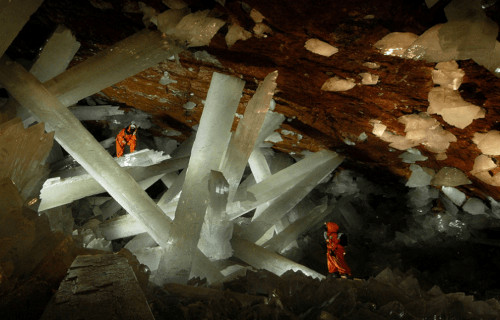
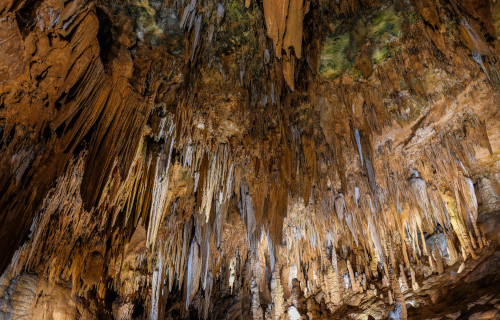
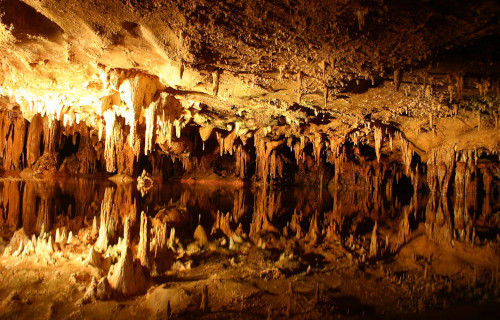
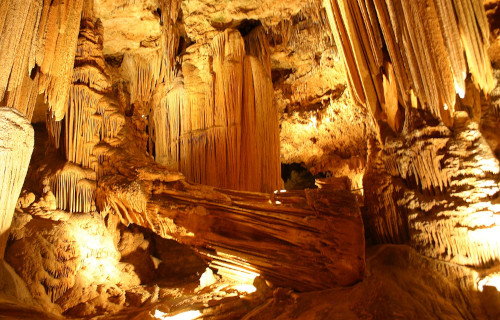
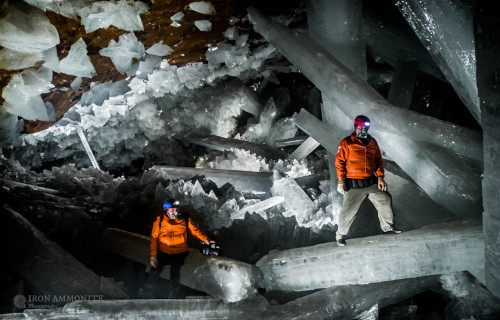
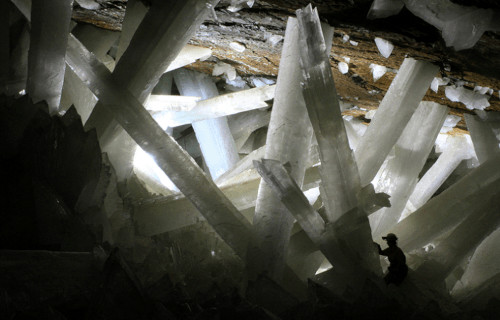
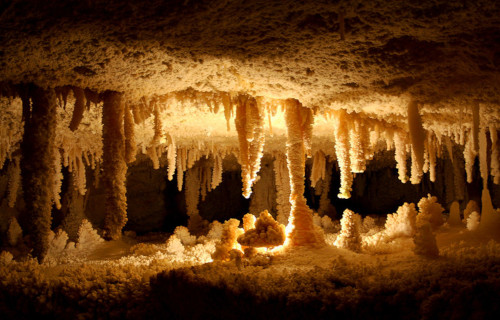
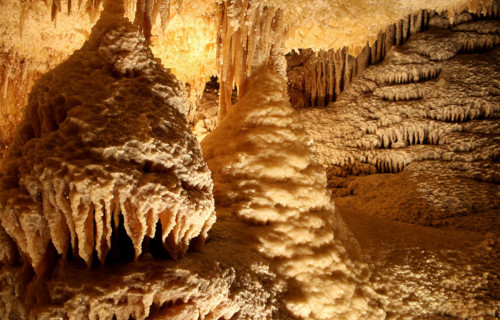
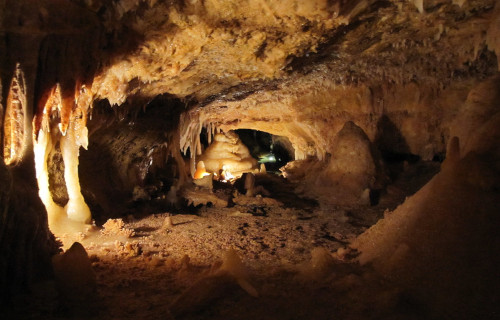

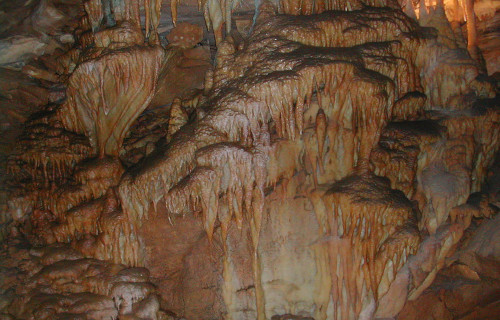
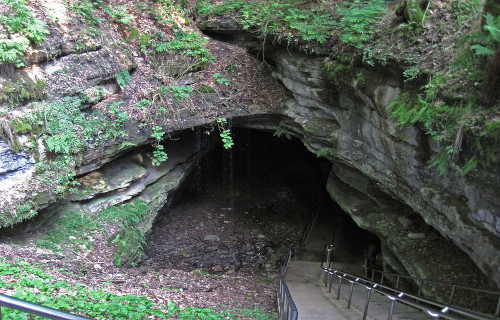









Leave a Reply